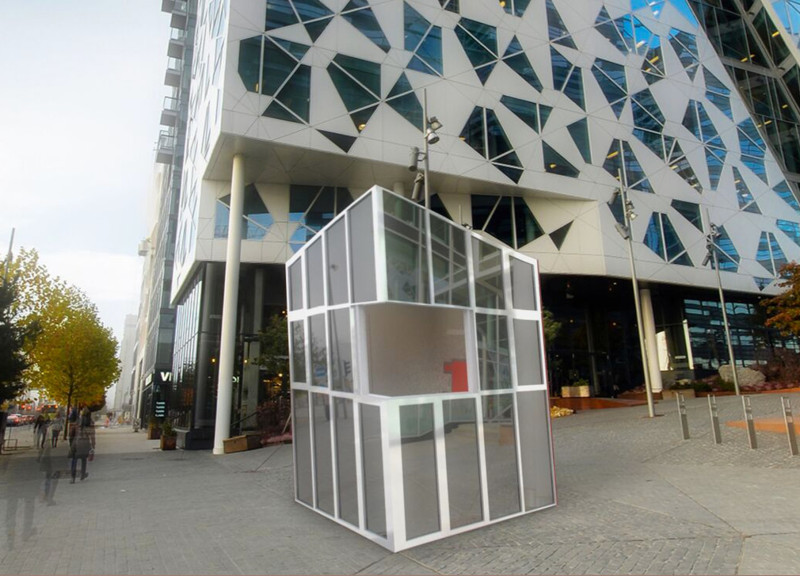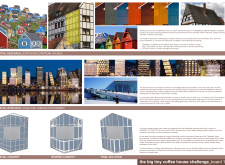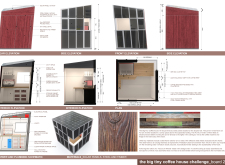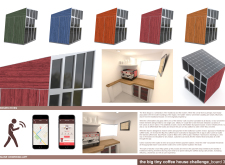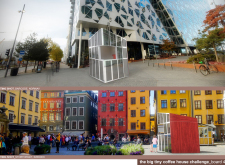5 key facts about this project
## Overview
The Big Tiny Coffee House is located in high-traffic urban areas, designed to address the practical needs of modern city environments through a contemporary interpretation of traditional Northern European architecture. The project integrates principles of sustainability and adaptive design, contributing positively to the urban landscape both functionally and aesthetically.
## Design Philosophy
### Traditional Influences and Modern Adaptation
The design was informed by an in-depth analysis of Northern European housing structures, drawing on specific architectural elements such as batten and board façades, vibrant color palettes, and pitched roofs. These characteristics were adapted through a minimalist lens, which streamlined traditional forms to meet contemporary urban requirements. The evolutionary design process transitioned from initial concepts that closely adhered to historical references to a final solution that marries these elements with modern urban functionality.
### Material Selection and Sustainability
The selection of materials plays a crucial role in both the aesthetic and sustainable aspects of the Big Tiny Coffee House. Key components include integrated solar panels that contribute to renewable energy generation, a robust steel structural frame for durability, and reconstituted timber for warmth and visual appeal. Polycarbonate panels ensure efficient natural lighting, while varied glass forms enhance transparency and interaction with the surroundings. Together, these materials underscore the project's commitment to environmentally friendly design practices.
## Functional and User-Centric Features
### Interior Layout and Operational Efficiency
Internally, the kiosk is optimized for efficiency, featuring a strategically designed serving counter that enhances beverage preparation and delivery. Custom cabinetry provides effective storage solutions, maximizing space while ensuring accessibility. Additionally, the incorporation of greywater management systems and sustainable electrical infrastructure supports operational sustainability.
### Enhanced User Experience
To further improve user interaction, the design includes a mobile application that allows customers to place orders in advance. This technology streamlines service and integrates the convenience of modern app usage with the traditional coffee purchasing experience, catering to the dynamic needs of urban life.
### Strategic Placement and Community Engagement
The kiosk's placement in vibrant urban settings, such as the Barcode project in Oslo and Stortorget in Sweden, is intentional, chosen to harness foot traffic and serve as a focal point for community engagement. This strategic location reinforces the cultural significance of coffee as a social activity, establishing the Big Tiny Coffee House as a vital part of the urban social fabric.


